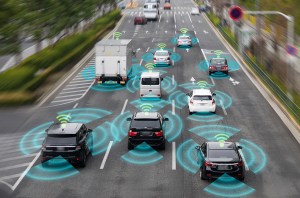By Adina Rogoz on October 2, 2020 in Technology
Back in 2015, General Motors, Google’s Waymo, Toyota and Honda made announcements that by 2020 they will have driverless cars. Elon Musk was even more optimistic and said that Tesla would do it by 2018, but when that failed, he moved up the release date to 2020. We are in 2020 and as we all see, there are no sign of driverless cars on the streets. Musk recently commented that by the end of this year, Tesla will have fully autonomous cars.
While Tesla may have the technology to enable a car to finish a journey without any human input—what the industry calls level 5 autonomy—the actual development of the vehicle not only has to be safe, but also meet complex legal requirements.
How do they work?
In theory, self-driving cars need to be outfitted with cameras that can see all the objects around it and be able to react rather than steering into one. These cameras help the car to view objects, while there are also sensors that help them detect objects like pedestrians, other vehicles and road signs. Lidar uses lasers to measure the distance between objects and the vehicle, while tracking speed and direction.
The sensors send data back to the car’s control system or computer to help it make decisions about where to steer or when to brake. There are also cases when bad weather, heavy traffic or roads signs with graffiti can negatively impact the accuracy of sensing capability to self-driving cars. We will have to wait and see if an autonomous car can drive as well as a human. Autonomous cars cannot make eye contact with others to confirm who has the right of way, react to weather conditions or make judgment decisions that are much more difficult to program.
Environmentally friendly
Some people say that self-driving cars will be better for the environment, and might reduce car trips as people will call for a car when they need one. Braking hard, accelerating hard, idling the engine, all of which use up a lot of fuel, can be avoidable by a computer. According to a study by the National Renewable Energy Laboratory on behalf of Volvo showed a five to seven percent drop in fuel consumption for driverless cars compared to human-piloted vehicles.
Social acceptability
It will likely be years past introduction of a finalized model for people to feel safe buying a self-driving car, as well as for others to share the road with them. With test accidents caused by Tesla’s current automated prototypes, as well as with other automated vehicles, there is a long way to gain people’s trust in these cars. However, this is clearly the future – it’s just a matter of time.


